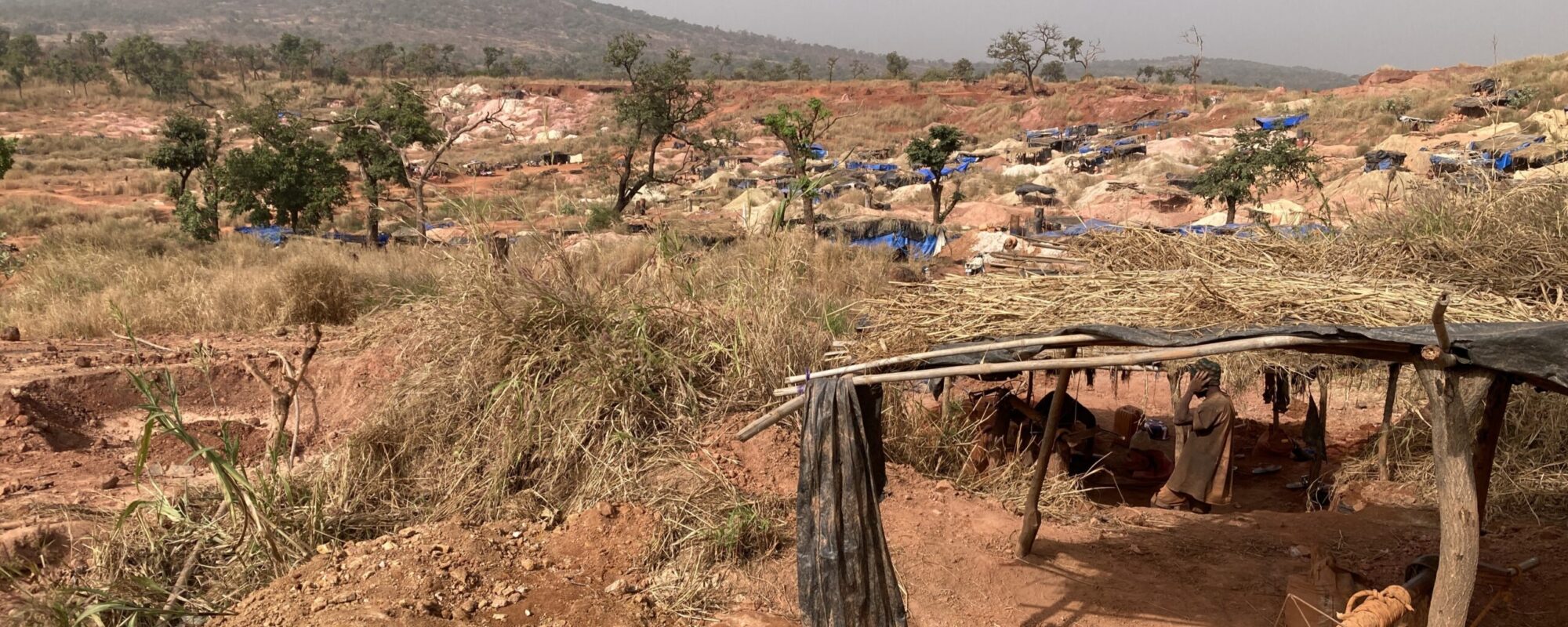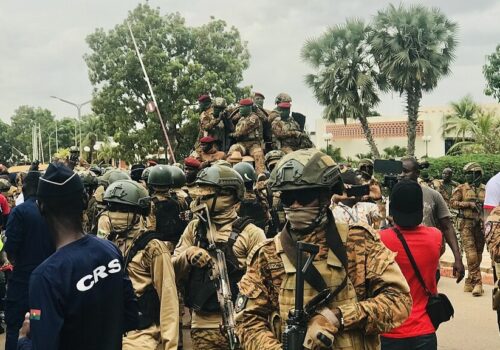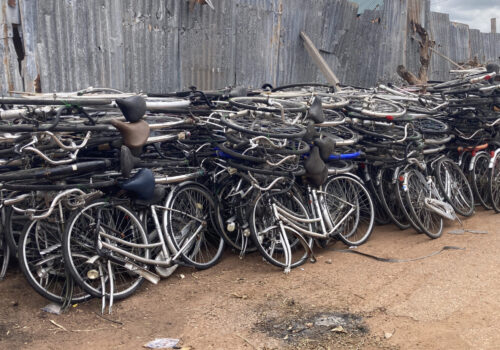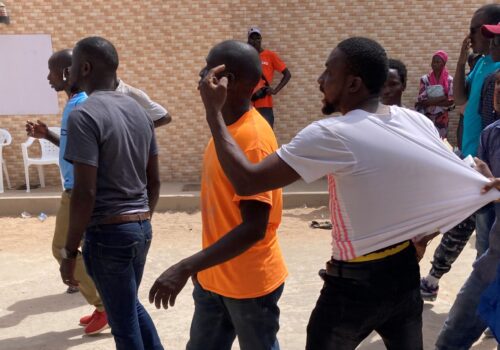KHARAKHENA, Senegal — I stepped out of a car in this large village near the Malian border into a very different world than the small placid town of Saraya we had left behind 20 miles ago. Around us—myself, photographer Guy Peterson and our guide Omar Diané—generators rumbled, shaking the small bamboo-panel shacks they sat beside. A group of children approached curiously, all wearing tee-shirts emblazoned with the face of Mali’s junta leader Assimi Goita.
A motorcycle careened around the corner, honking to announce its presence and scattering the children. In the distance, I could make out a fetid pond full of trash. No sign of the state authorities was anywhere to be seen. On a distant hillside, little tarpaulin shelters were barely visible, covering small holes and hundreds of men tunneling into the hillside looking for gold.
Artisanal—which is usually used to mean non-industrial—mining in Africa often brings to mind civil war, child soldiers and brutal militias. Those associations come from places like Sierra Leone, eastern Congo and the Central African Republic where fighting over (relatively) accessible mineral deposits has prolonged deadly civil wars. Even in Senegal, which thankfully suffers no war, surface-level gold mining in the country’s southeast is mostly known to outsiders for its associated child labor, environmental degradation and sex trafficking.
I witnessed all these social ills in Kharakhena. Still, through conversations with people who mine and process gold, I was also exposed to a millennium-old belief system and institutions that govern such sites across a broad swath of West Africa. Instead of being horrified by disorder and violence, as I’d expected, I came away from Kharakhena awestruck by how West Africans are constantly innovating ancient traditions and beliefs to build order and ensure mutual prosperity for locals and foreigners alike.
Today, Kharakhena stands in the eastern part of the Kedougou region in Senegal’s southeast. Centuries ago, before either state or regional delimitations existed, medieval Arab geographers referred to the area as Bambuk and knew it as the source of most of the gold in world circulation.[1] Even further back in time, archaeological evidence suggests Africans have been mining the larger geological formation known as the Birimian Greenstone Belt—Kharakhena sits on the western end—for over a millennium, New York University professor Robyn d’Avignon writes in her book A Ritual Geology.
The area around Kharakhena was first settled by Jallonke peoples who arrived centuries ago from the Futa Jallon highlands to the south. They were later joined by Maninka peoples from Mali who are a part of the larger Mande family of ethno-linguistic groups. Mande peoples—who live across Senegal, Gambia, Guinea-Bissau, Guinea, Mali, Burkina Faso and Ivory Coast—are widely considered the founders of West African gold mining traditions.[2] It was the Maninka, likely drawn to the area by land features they knew from experience to indicate gold deposits, who began mining in places like the stream by Kharakhena.
Gold mining in this part of the world has experienced boom and bust cycles depending on environmental and political trends at home and abroad. During the 20th-century’s inter-war years, when gold prices were high and French colonial officials encouraged mining in an attempt to create their own “Californie,” tens of thousands of West Africans moved to mining sites in Mali, Senegal, Guinea and Ivory Coast. D’Avignon told me over the phone that while working in colonial archives, she found references to gold mining in Kharakhena during this period in the early 1920s.
After decades of indifference, international corporations returned to the region’s gold deposits in the late 1990s motivated by rising gold prices, depletion of more accessible deposits elsewhere and reformed mining codes. While the Senegalese government allowed international mining interests to explore and open large-scale operations, people in communities with a history of gold mining also began using newly available technologies like metal detectors and jackhammers to re-explore places their fathers once dug for gold.
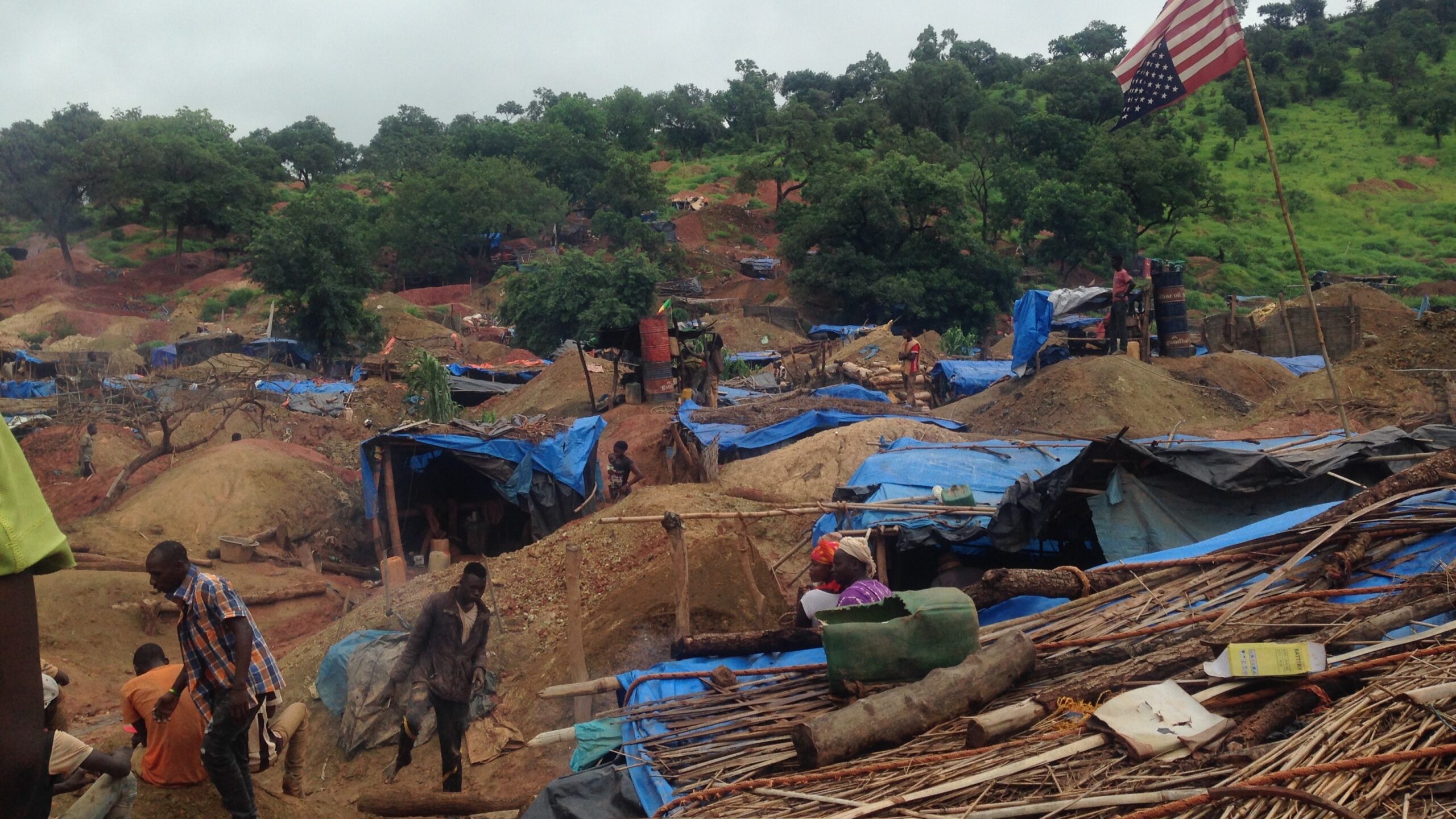
In the early days of a gold rush that began in Kedougou in the late 2000s, Kharakhena remained a small community of three to four households, says the current chief, Ibrahima Keita. He was in his 20s at the time and he and other young men were predominantly farmers, growing maize, peanuts, millet and sorghum during the four-month rainy season. Everyone knew there were alluvial deposits (known as nara in Maninka or “placer” mining in the Western context) in a nearby stream bed, but those deposits were not perceived to be particularly valuable and thus left for women to exploit.
However, as the story now goes a woman from Kharakhena found a rock with large visible specks of gold in her family field in 2012. Word spread quickly from Senegal to neighboring Mali and Guinea and eventually even as far as Burkina Faso. “When you find gold,” Keita said, “everyone hears about it.”
Over the next three years, thousands of people from across West Africa descended on Kharakhena. Suddenly, the village of 150 people boasted around 11,000 inhabitants. Among the gold rushes occurring across Kedougou, Kharakhena became particularly notorious for its Wild West atmosphere. Media reports about rampant crime, human rights violations and environmental catastrophe circulated. Government officials grew concerned about the large influx of foreigners in a barely governed rural zone five miles from the border with Mali, a country beset by secessionist rebels and jihadist insurgents.
Corporate mining interests also took notice. The South African firm Afrigold purchased the rights to prospect and mine gold in a strip of land including Kharakhena. As part of a region-wide crackdown on artisanal mining on land owned by corporations, the Senegalese government sent bulldozers operated by soldiers to forcibly close artisanal mines, including Kharakhena’s. In 2014, Kharakhena’s juura—the Mande word that refers to the mining site—was closed and thousands decamped. Mining later resumed in specific areas “granted” by Afrigold, but many complain that the South African firm seized the best deposits.
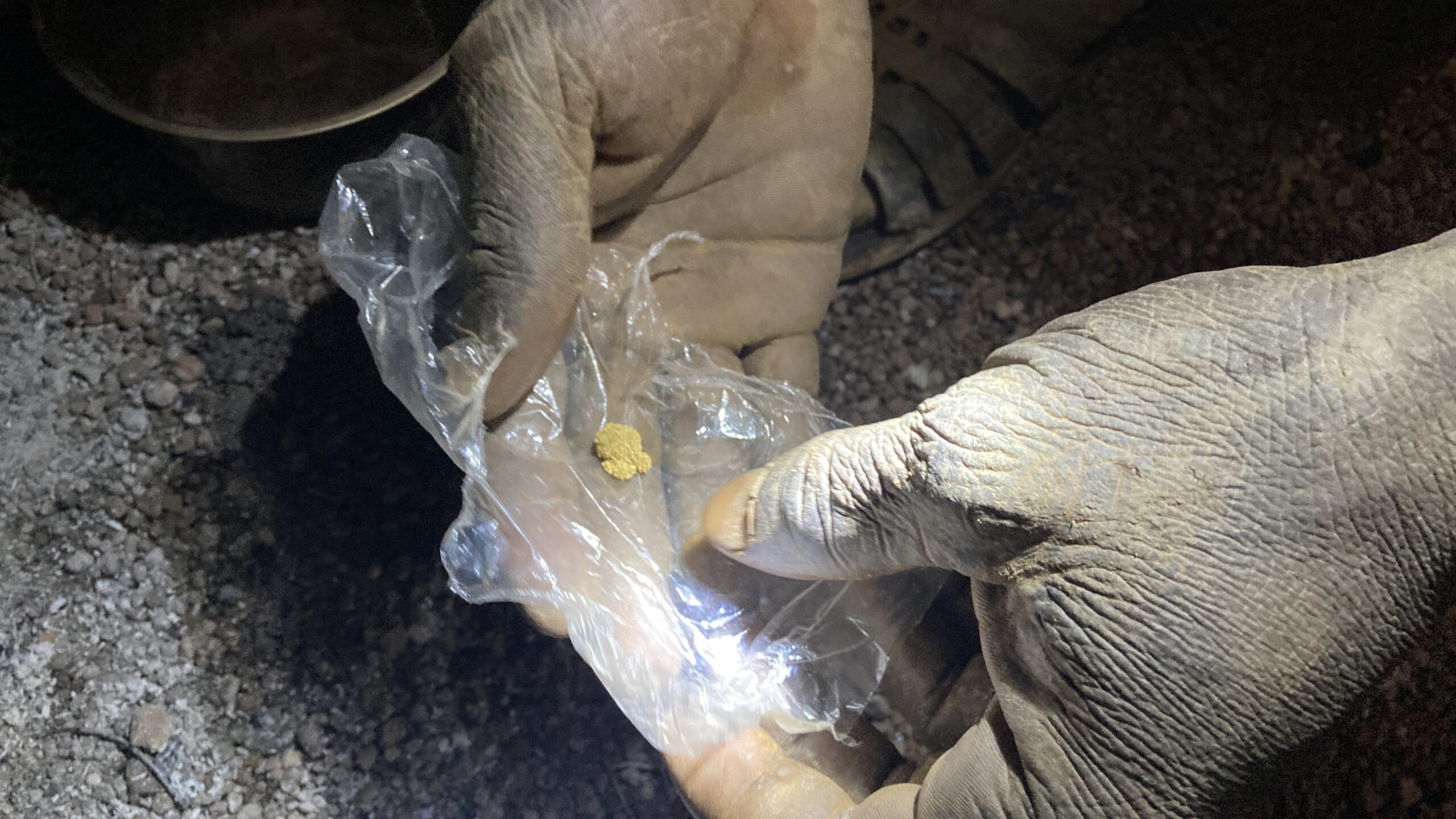
When I visited Kharakhena last month with Peterson and Diané, residents told us the population had stabilized at around 3,000 people. On the edge of town, next to large chicken coops by the side of the river where women once panned for gold, we caught our first glance of Kharakhena’s juura. Less than a mile away, through the seasonal haze, we could just make out a once-forested hillside pockmarked with hundreds of holes protected from the elements by low shade structures topped in plastic tarps.
After passing a small pile of chicken feathers at the base of the juura, we began hiking uphill over piles of dirt recently disgorged from the earth. We wove between small 10 by 10-foot shaded encampments, each one staffed by a team of between four and six people hovering around their mining shaft. In one team, women were cranking pulleys to bring bags of soil and rock to the surface. In another, men were lowering beams of wood into the ground to reinforce their tunnels. As we rounded a bend, we were nearly drenched when a team turned on its generator to pump out groundwater.
About halfway up the hillside, we reached a team from Guinea. I introduced myself to Ibrahim Ba, a short middle-aged man covered in dirt who identified himself as the damantigi, or “master of the tunnel.” As he recited the names of other mines he had worked in Guinea and Mali, two young men hauled a large bag of soil and rock from their shaft and emptied it on the side. Ba rifled through the dirt until he found a specific kind of rock, which he handed to an apprentice to crush into powder with an iron mortar and pestle.
A few minutes later, as Ba poured water over the powder and swished the mixture back and forth in a plastic pan to test for gold, he explained how the team was organized. As damantigi, he recruited the men digging underground (damansinna), the pulley operators (juulusabala) and other subterranean experts such as those who place wooden reinforcement (balandula) or detonate explosives. He is also responsible for securing the capital for the pulley, headlights, rope, daily lunch and solar panels that power a fan that blows fresh air into the tunnels. “Look,” he said, pointing to a few shiny specks in his pan with a grin, “there is still gold here in Kharakhena.”
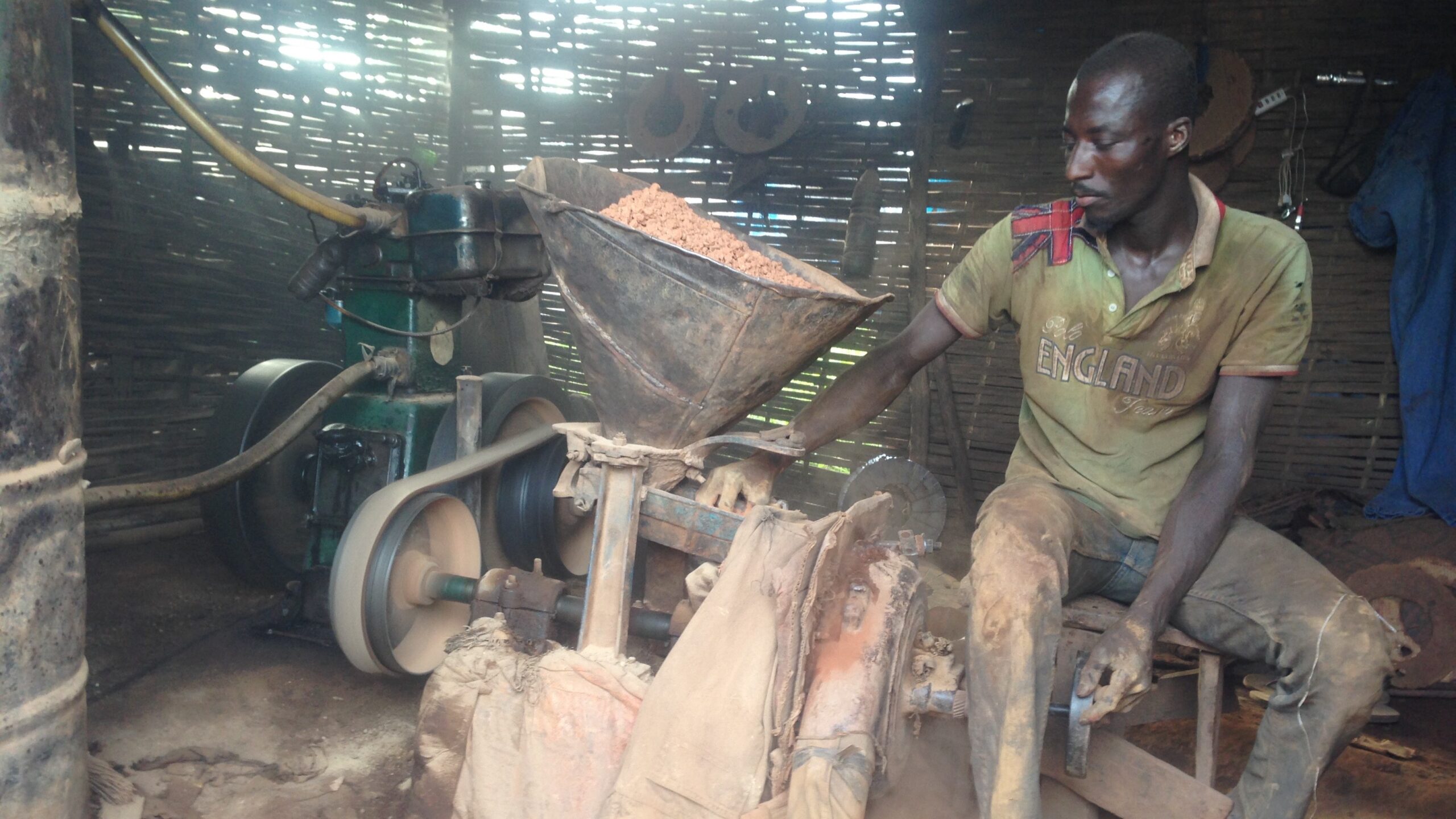
Ba and his team suddenly became more invested in their work than describing the mines’ organization to an outsider, so we bid goodbye. As I descended the hillside, my guide Omar Diané led us to a group of men sitting in shade near the base of the juura. Compared to the miners, who were covered in mud and dust, these were by far the cleanest-looking people at the juura. “We should have greeted the tombuluma before we entered” Diané said. “Make sure to have 2,000 francs to apologize.”
Diané, a former tombuluma himself, later explained that each team has one to provide security and oversee mediation. If disputes arise within or between teams, the tombuluma finds a resolution. They watch out for theft and report suspicious individuals to higher authorities. They are guided by, and enforce the taboos established by the juratigi, or “master of the mines.”
As curious as I was to speak with the juratigi, I wanted to finish seeing how people extract gold. Walking into town, we passed a young man washing rock powder down a wooden sluice. We approached and Issaka Marko, seeing our interest, invited us to sit. He explained that he is from the Sikasso region of Mali and came to Senegal around 2015 after working in Ivory Coast and Mali.
Marko is a balandula, responsible for placing wooden reinforcements in horizontal shafts. Like many people who mine and process gold, he was paid in bags of unprocessed rock. After paying (again, in portions of rock) a man from Burkina Faso with a mechanized rock crusher to pound the rock to powder, he was now methodically pouring water through the powder on a sluice. Every few minutes, he lifted plastic mats from the sluice, which capture heavier particles, and rinsed them in what looked like a basin of muddy water.
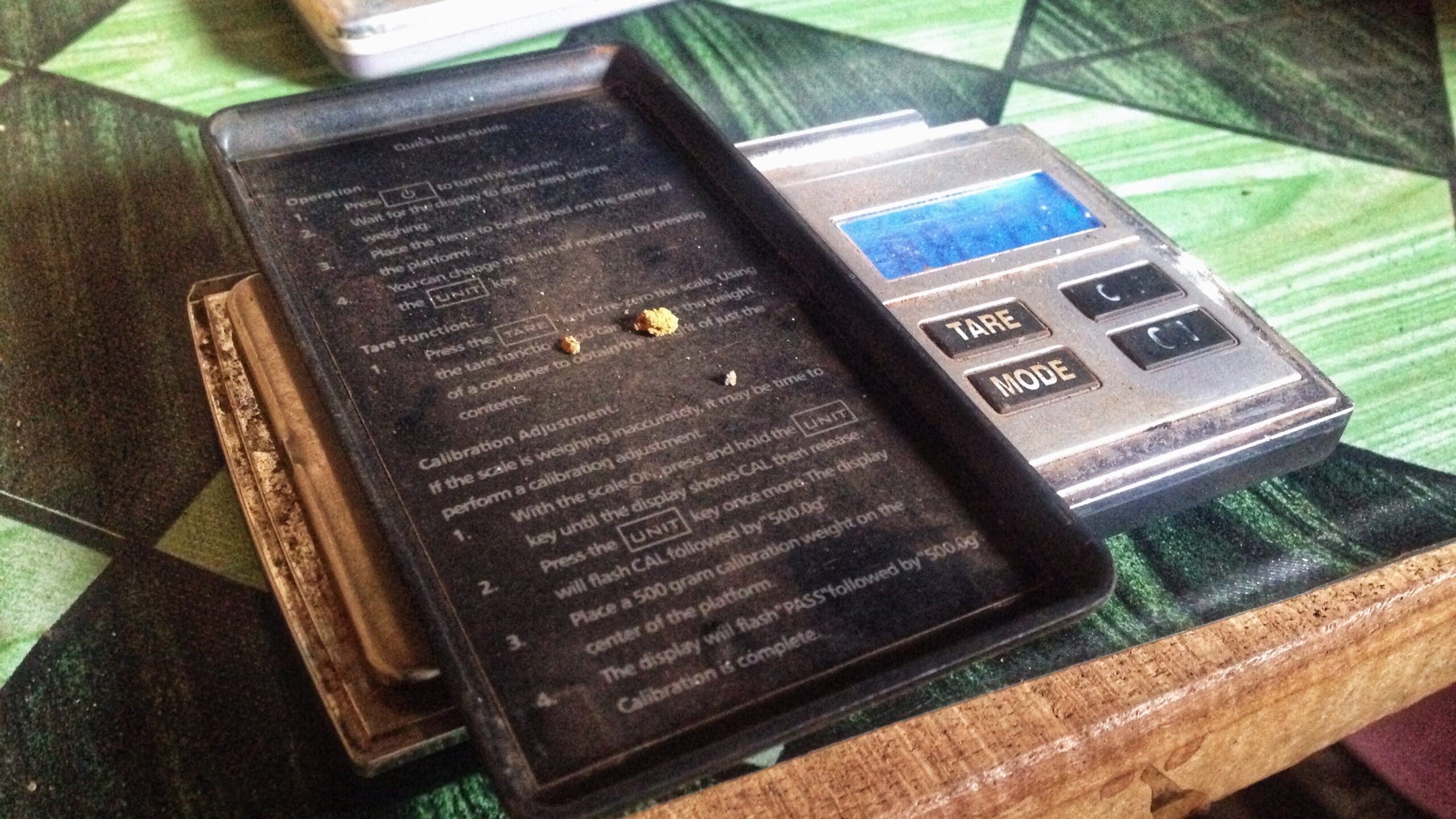
After a few hours, Marko finally made his way through the entire bag of powder. He then produced a small plastic bag with a silvery bead of mercury[3] and poured a few drops into the dirty water. He slowly emptied the basin’s liquid as he mixed the mercury into the sediment with his hands until a small silvery globule emerged amid the silt. He picked up the nugget—now infused with gold—and placed it on the coals he had used for tea to burn off the mercury. After a few minutes, Marko took a small piece of gold off the fire and sold it to a nearby gold trader for around $100.
“Every mine is a little different,” he explained, more relaxed now that the day’s work was done. “It depends on the landscape and how the gold is hidden.” At the alluvial deposits by river beds he worked as a teenager in Ivory Coast, people panned for gold by river banks. In Mali and Guinea, where restrictions on explosives are less tightly enforced, he worked in pits and large tunnels. While the roles and their importance changed from juura to juura, all together there was enough consistency for him to integrate into mining sites across a broad swath of West Africa.
Marko’s story reveals how such common roles, institutionalized across the region, help organize cooperation among diverse peoples engaged in complicated semi-industrial processes. However, while these institutions may explain the technical side of the order I witnessed in Kharakhena, I soon learned there is also a spiritual component.
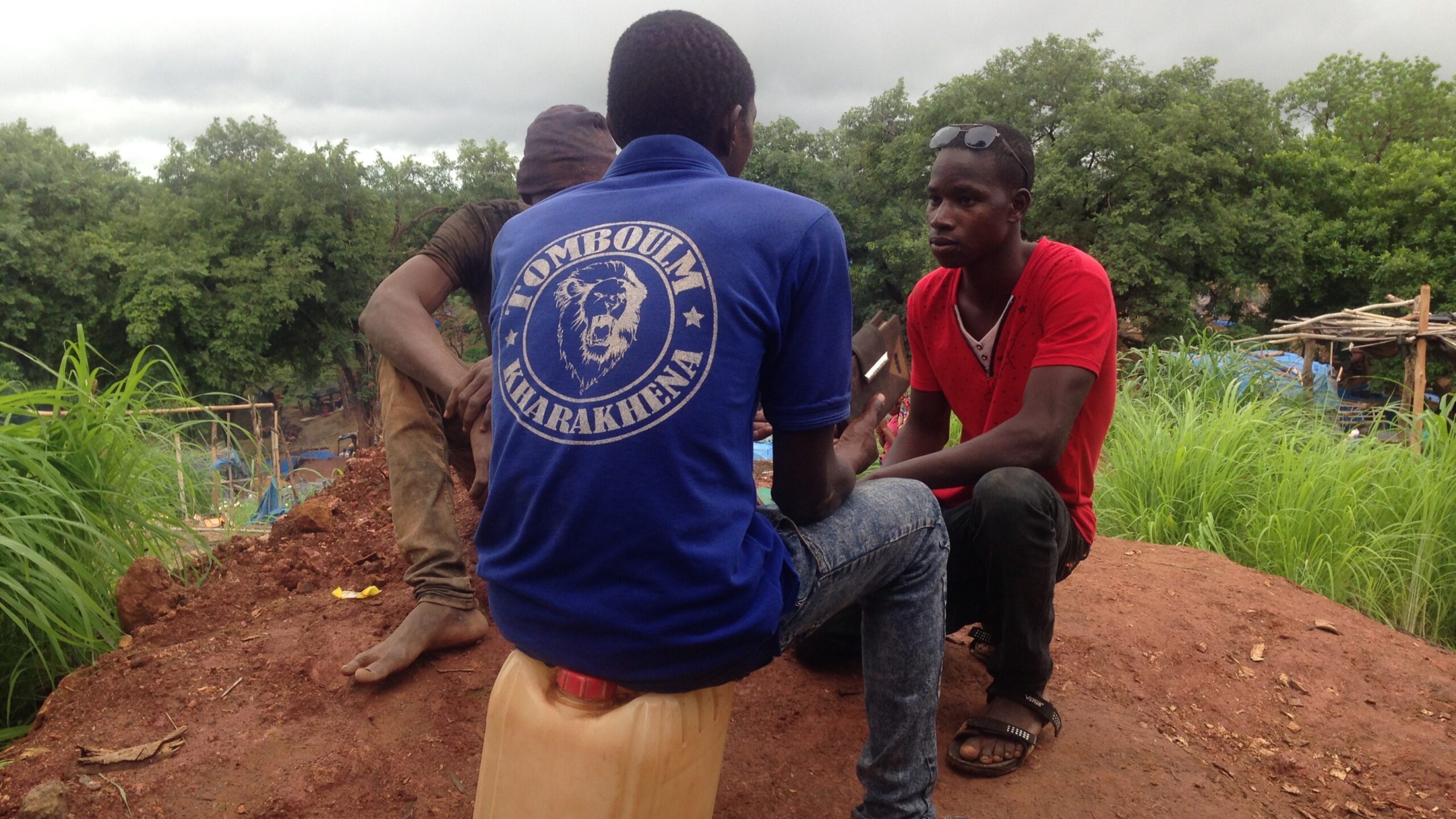
Almost everyone I met at Kharakhena referred to the juuratigi, but it took me a while to fully understand the position. “They do the sacrifices to the spirits so people can see gold,” my guide, Diané, kept repeating. I later came to see that gold is understood to be the property of underground spirits who hide the precious metal from humans unless they are appeased (or, in some tellings, distracted), with sacrifices. Liaising with those spirits is the juratigi’s domain.
West African belief in subterranean gold-controlling spirits goes back centuries. When the Malian emperor Mansa Musa passed through Cairo in 1324 during his hajj pilgrimage, he told an Arab chronicler that his mountains of gold came from trading with pagans who controlled goldmines. When asked why he did not seize the mines himself, he responded: “If we [Muslims] conquer them and take it, it does not put forth anything, but when it returns to [the pagans] it puts forth as usual.”
Following mass conversions in the 19th and 20th centuries, Islam became more common around West Africa’s gold mines. Today, the underground gold-controlling spirits are referred to as jinn, supernatural beings referenced in the Quran, and accepted under the rubric of Islam. Animist fetishes, not at all allowed under Islam, are also still present in many mining sites.
Kharakhena’s juratigi is a thin but sturdy elderly woman named Diabou Diallo. As a child, she told me, she had dreams that foretold the future. When a travelling mystic informed people in Kharakhena that they would be rewarded with gold if they named a juratigi, she was nominated. Under the mystic’s guidance, three nominees placed a token stick on the ground. A child[4] was then called to pick one of the sticks at random. The child picked Diallo’s stick, sealing her appointment.
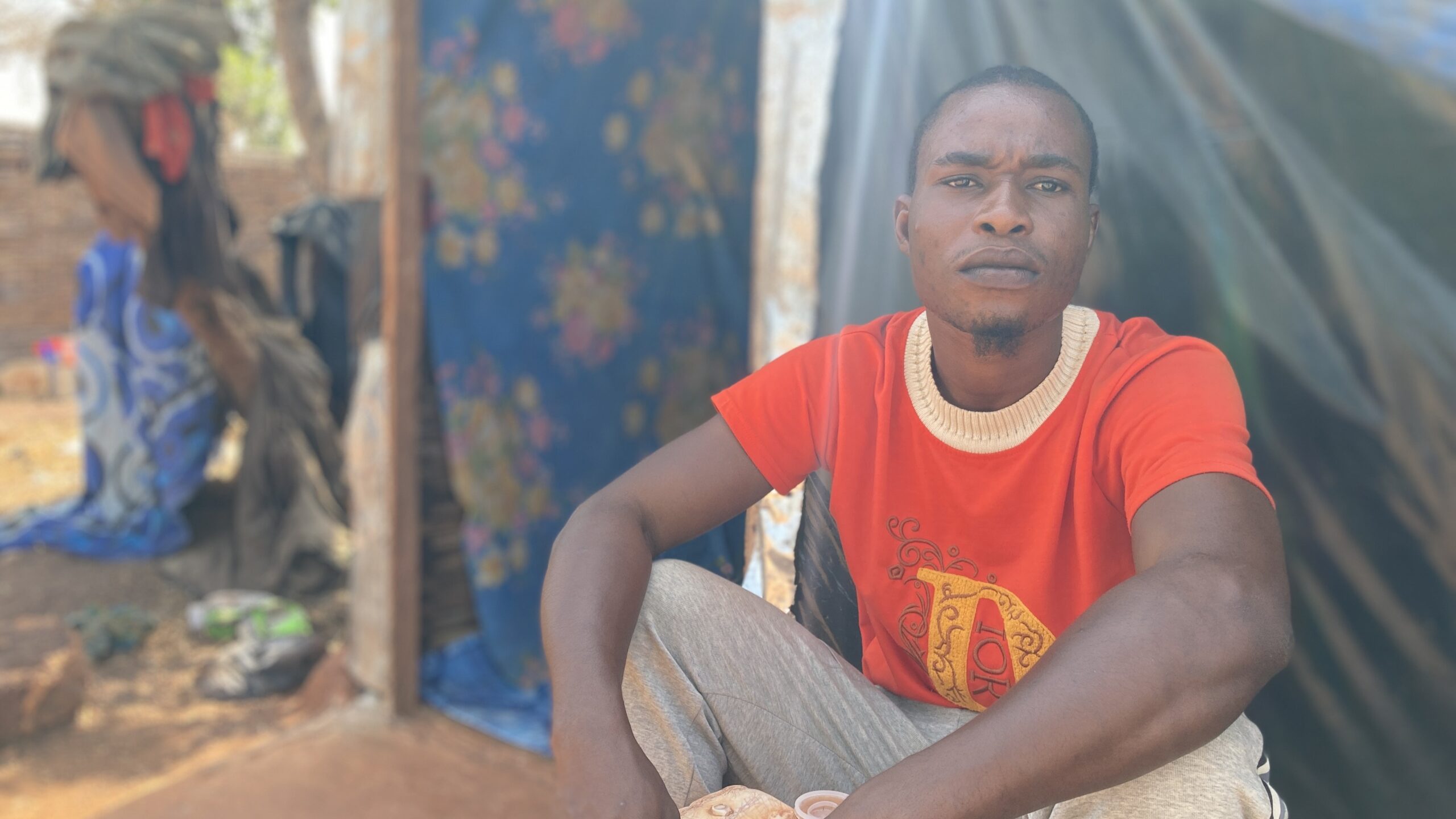
After training from the mystic, she began communicating with the jinn in the hillside during her dreams. “They tell me what to sacrifice,” she said, adding that the victim could be a chicken or goat. “I conduct the sacrifice either here at my home or at the juura.” The jinn also explain their taboos, including working on a Monday and fighting on the juura. She is also responsible for approving each team’s tombuluma and mediating disputes that rise beyond their level. For those services, every single mining team pays a portion of unprocessed rock they pull from the earth.
In addition to the juratigi, most mining teams seek spiritual assistance from traveling mystics. In 2017, I was lucky to interview a Malian mystic recently arrived in Kharakhena. He, too, communicated with jinn in his dreams. In many cases, he was paid in the unprocessed rock he had worked with. He complained that the rise in thieving and fighting around the juura was upsetting the jinn, who was hiding gold from miners. He indicated that he would likely travel to a new mining site shortly. When I returned this year, he was long gone.
Such beliefs are so foundational to the functioning of the juura that even migrants from far outside traditional goldmining areas adopt them as their own. I first met Anslem, a Nigerian and one of the few Christians in Kharakhena, when he was buying a chicken. When we sat down a few hours later, he narrated how he had first heard about Kharakhena while working on a fishing boat off the coast of Senegal after failing to migrate to Europe.
When I inquired about the chicken, he admitted it was intended as a sacrifice (under the guidance of an Islamic holy man no less) to increase his chances finding gold. “I had never heard these beliefs in Nigeria,” he said, “but when you see that someone has found gold at the juura, you know it is because they went to the [mystic].”
The spiritual beliefs give the technical roles legitimacy in the eyes of thousands of people who work in the juura. “Without the juratigi and [mystics],” Marko from Mali told me, “no one would dare to mine here. They, and the tombuluma, are the masters of the juura and we respect their authority.”
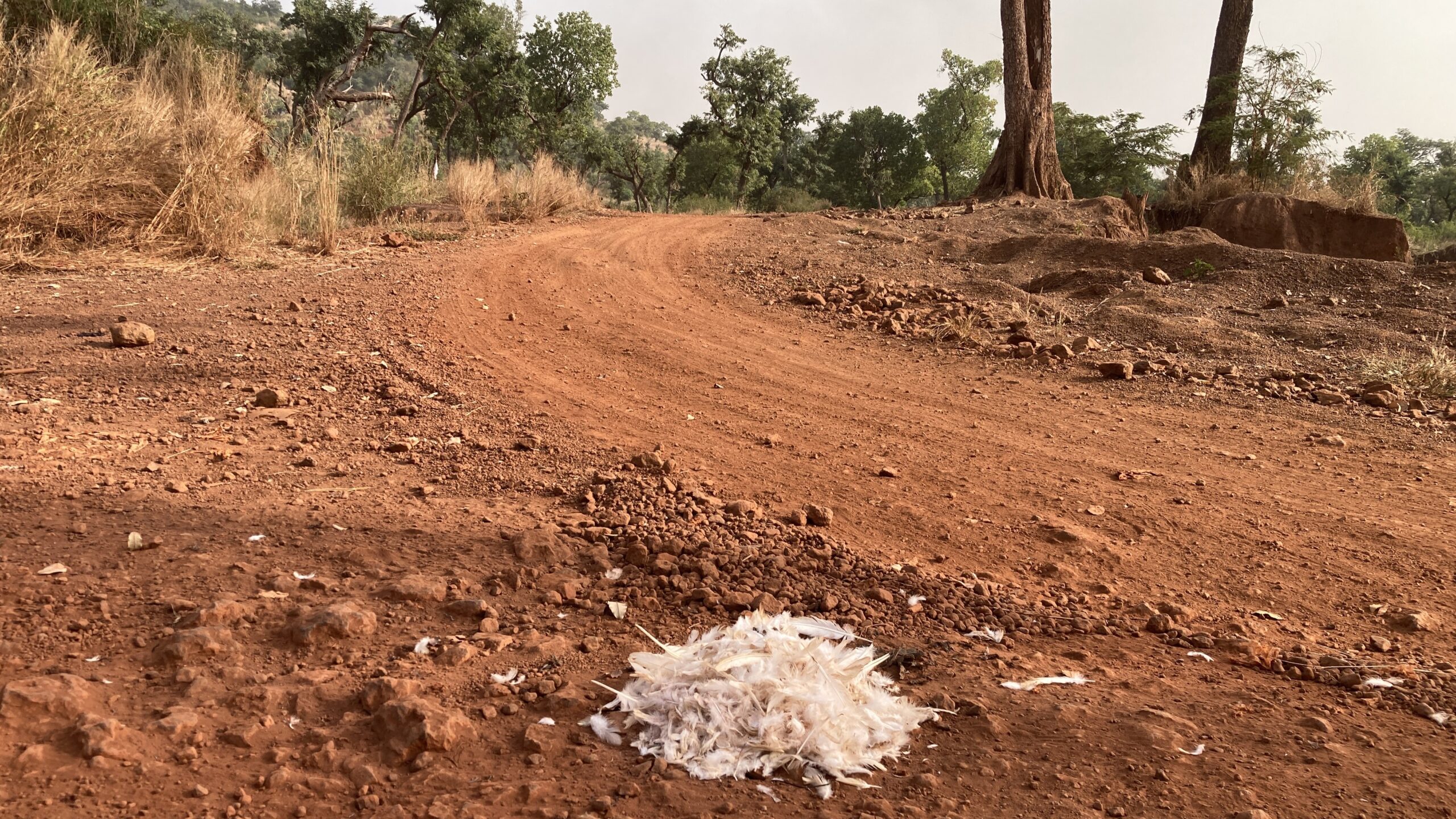
In the last decade, the scale and speed afforded by new technology has dramatically changed artisanal mining. Jackhammers help miners drill deeper than they ever have before. Metal detectors facilitate exploring large surface areas for deposits relatively quickly. Improved transportation has made it possible for thousands of people to descend on one small village in the space of a week.
But instead of remaining ossified, the institutions and beliefs discussed in this dispatch have constantly adapted to change. That is the reason they are still here after a millennium and will continue to govern these spaces as long as people are mining gold.
That is fundamentally a good thing. As d’Avignon told me over the phone, the traditions ensure that—despite all the problems in Kharakhena and other sites—Senegal’s gold mines are far less violent or oppressive than those in the Central African Republic or Sudan.
As security experts raise the alarm about Malian jihadists approaching the Senegalese border and potentially infiltrating gold mines, they would do well to understand the resiliency these traditions provide. By the same token, seeking solutions for the social and environmental ills that do exist as a result of mining through these institutions may prove more promising than blanket condemnations.
As mining in Kharakhena evolves with shifts in technological and local religiosity and governance, its institutions and beliefs will continue to play a major role, and I would argue a positive one, in the lives of hundreds of thousands of people across the region.
Endnotes
[1] As the journalist Howard French discusses in his popular 2021 book Born in Blackness, legends of Bambuk’s gold prompted Iberian leaders to fund the first European expeditions to West Africa’s coast.
[2] Those are the countries crossed by the Birimian Greenstone Belt where most of the region’s gold is found. Furthermore, Mande languages are often the lingua-franca of West African mines, even in places like Kedougou, where they are a distinct minority. Everyone in Kedougou, regardless of mother-tongue, uses the Mande word juura to refer to mining sites, and uses Mande words for the roles and institutions that organize mining.
[3] Mercury, a heavy metal, is poisonous to inhale and illegal in Senegal. Studies have shown that the groundwater in Kharakhena has been poisoned by rampant mercury use.
[4] In A Ritual Geology, d’Avignon describes a regular ceremony in the mining communities of Juuraba where bags of unprocessed rocks are laid out for a child to divide between the members of the mining team. Children are tasked with the work because they are perceived to be “less vulnerable to corruption than adults.”
Top photo: View of the juura from half-way up the hill in November 2023

